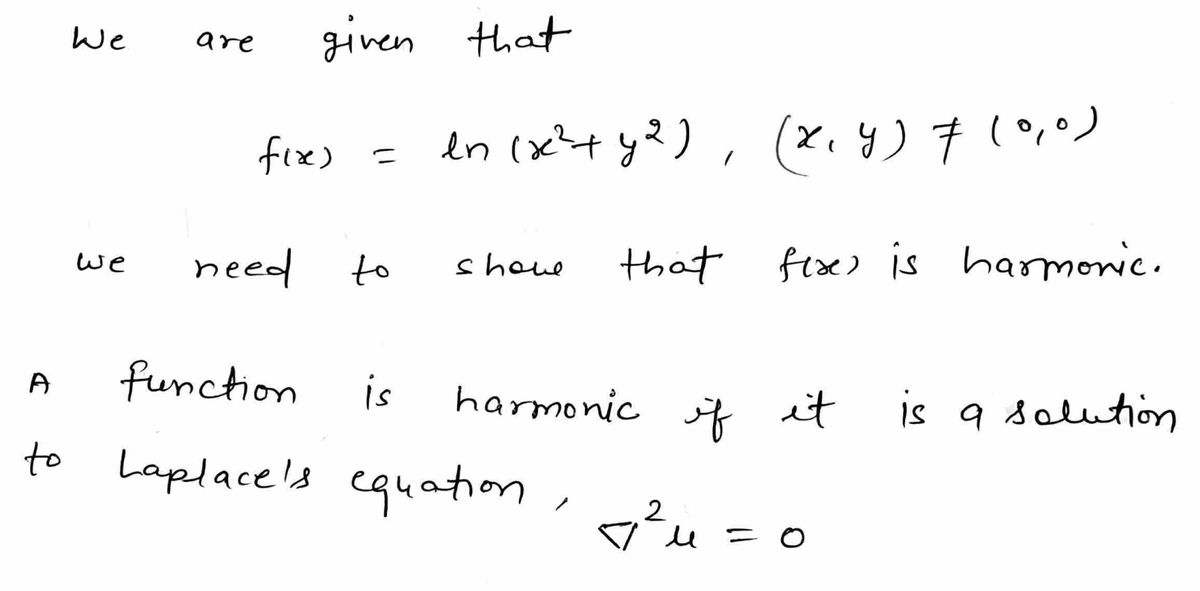3. Let A denote the Laplace operator, viz., a²f8²f Af := + əx² əy² Here f = f(x, y). The second order PDE Af = 0, which is the same as a²f8²f + 0, əx² dy² is called the Laplace equation. Any solution f = f(x, y) of the Laplace equation is called a harmonic function. Show that the function ln(x² + y²), (x, y) = (0,0) is harmonic.
3. Let A denote the Laplace operator, viz., a²f8²f Af := + əx² əy² Here f = f(x, y). The second order PDE Af = 0, which is the same as a²f8²f + 0, əx² dy² is called the Laplace equation. Any solution f = f(x, y) of the Laplace equation is called a harmonic function. Show that the function ln(x² + y²), (x, y) = (0,0) is harmonic.
Linear Algebra: A Modern Introduction
4th Edition
ISBN:9781285463247
Author:David Poole
Publisher:David Poole
Chapter4: Eigenvalues And Eigenvectors
Section4.6: Applications And The Perron-frobenius Theorem
Problem 69EQ: Let x=x(t) be a twice-differentiable function and consider the second order differential equation...
Related questions
Question

Transcribed Image Text:3. Let A denote the Laplace operator, viz.,
a²f8²f
Af := +
əx² əy²
Here f = f(x, y). The second order PDE Af = 0, which is the same as
a²f8²f
+
0,
əx² dy²
is called the Laplace equation. Any solution f = f(x, y) of the Laplace
equation is called a harmonic function.
Show that the function ln(x² + y²), (x, y) = (0,0) is harmonic.
Expert Solution
Step 1

Step by step
Solved in 3 steps with 3 images

Recommended textbooks for you

Linear Algebra: A Modern Introduction
Algebra
ISBN:
9781285463247
Author:
David Poole
Publisher:
Cengage Learning

Algebra & Trigonometry with Analytic Geometry
Algebra
ISBN:
9781133382119
Author:
Swokowski
Publisher:
Cengage

Linear Algebra: A Modern Introduction
Algebra
ISBN:
9781285463247
Author:
David Poole
Publisher:
Cengage Learning

Algebra & Trigonometry with Analytic Geometry
Algebra
ISBN:
9781133382119
Author:
Swokowski
Publisher:
Cengage